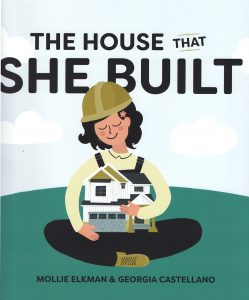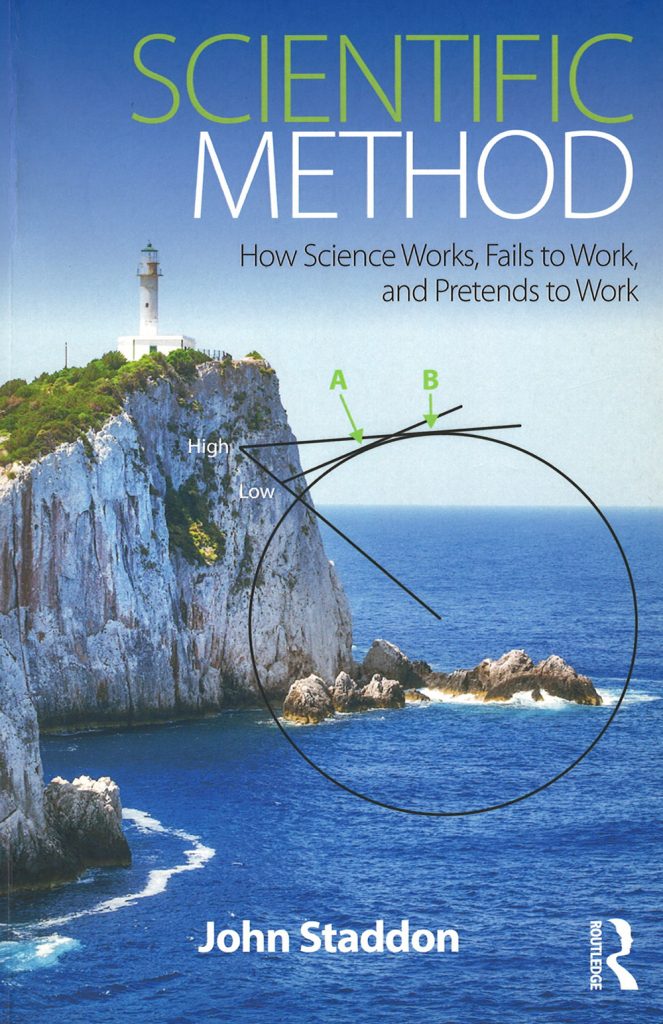Innovation comes in many forms and provides benefits for profit-making and nonprofit or governmental organizations as well—if those organizations are willing to be innovative. The two books reviewed this month provide some insights.
THE HOUSE THAT SHE BUILT
Mollie Elkman and Georgia Castellano, NAHB BuilderBooks, Washington, DC, 2021, 36 pp., softcover ($18).
The facilities industry, from planning and design to construction and operations, has historically consisted of men. I’ve been proud to have led organizations where we had women and other underrepresented categories in some of these roles, including planner, architect, engineer, electrician, painter, and plumber. Unfortunately, the industry still lags behind others in attracting a diverse workforce.
 The House That She Built was supported by the National Association of Home Builders (NAHB) with a clear interest in reaching girls early in their education (K–3) to break through the stigma that girls are not capable of doing design or construction. Clearly, it is not usual reading material for most of this publication’s audience; it has a different focus.
The House That She Built was supported by the National Association of Home Builders (NAHB) with a clear interest in reaching girls early in their education (K–3) to break through the stigma that girls are not capable of doing design or construction. Clearly, it is not usual reading material for most of this publication’s audience; it has a different focus.
The audience, 5- to 9-year-olds, are generally not serious readers, so the book provides plenty of illustrations and uses simple words to identify opportunities in design and construction. It hits the target well. The authors speak from experience in the home building industry.
While I wouldn’t recommend the book for the typical facility officer, it is appropriate for those who have a mission to increase the diversity of our workforce with a long-term vision (likely 15–20 years). It’s also a nice book for a daughter or granddaughter this holiday time, just to broaden her horizons and help her to see opportunities for the future. I intend to use it to reach young people for my own industry.
SCIENTIFIC METHOD: HOW SCIENCE WORKS, FAILS TO WORK, AND PRETENDS TO WORK
John Staddon, Routledge, New York, 2018, 142 pp., paperback ($58.95), hardback ($160), e-book ($53.05).
We have been inundated by “science” over the last year and a half. Many in the news (both reporters and those reported on) have referred to “the science” when what they really mean is “the interpretation of the results following application of the scientific method to the data.” Many have also been led to the false impression that science has identified a single, clear, unambiguous conclusion. Nothing could be further from the truth.
 John Staddon, emeritus professor of psychology, biology, and neurobiology at Duke University, wrote Scientific Method: How Science Works, Fails to Work, and Pretends to Work to explain, in understandable language, what science really is and what it can do. He does so in eight chapters. In the first three chapters he presents fundamental approaches in the scientific method and uses the remaining chapters to demonstrate application of the method to two fields that are heavily reliant on data from samples of human behavior (psychology and economics).
John Staddon, emeritus professor of psychology, biology, and neurobiology at Duke University, wrote Scientific Method: How Science Works, Fails to Work, and Pretends to Work to explain, in understandable language, what science really is and what it can do. He does so in eight chapters. In the first three chapters he presents fundamental approaches in the scientific method and uses the remaining chapters to demonstrate application of the method to two fields that are heavily reliant on data from samples of human behavior (psychology and economics).
Most might wonder why it is important to understand inductive or deductive reasoning, correlation or causation, statistics, and null hypotheses. It’s likely that these things don’t matter unless you have a responsibility to figure things out and to demonstrate why they are so using clear evidence and analysis. Being able to demonstrate that you have gathered valid data, analyzed it following rigorous methods, and presented it using standard rules can be extremely important at a college or university where the lingua franca is the scientific method. It’s also possible you may want to do a Center for Facilities Research (CFaR) project to become an APPA Fellow; if so, then Scientific Method is good to have.
Facility management and operations is becoming a data-driven field. Facility managers need more data than virtually everyone else in higher education and they frequently ignore it, not because they don’t understand it but because there’s just so much of it. While Scientific Method won’t tell you how to tame the “data monster,” it will help you understand how to interpret all that data and apply it to the common purpose of providing better service to your stakeholders.
Ted Weidner is professor of engineering practice at Purdue University and consults on facilities management issues primarily for educational organizations. He can be reached at [email protected]. If you would like to write a book review, please contact Ted directly.
Bookshelf
Book reviews on current publications relevant to the profession, trends, and working environment of facilities and educational managers and professionals. To contribute a book review, contact Ted Weidner, field editor of this column.
See all Bookshelves.


